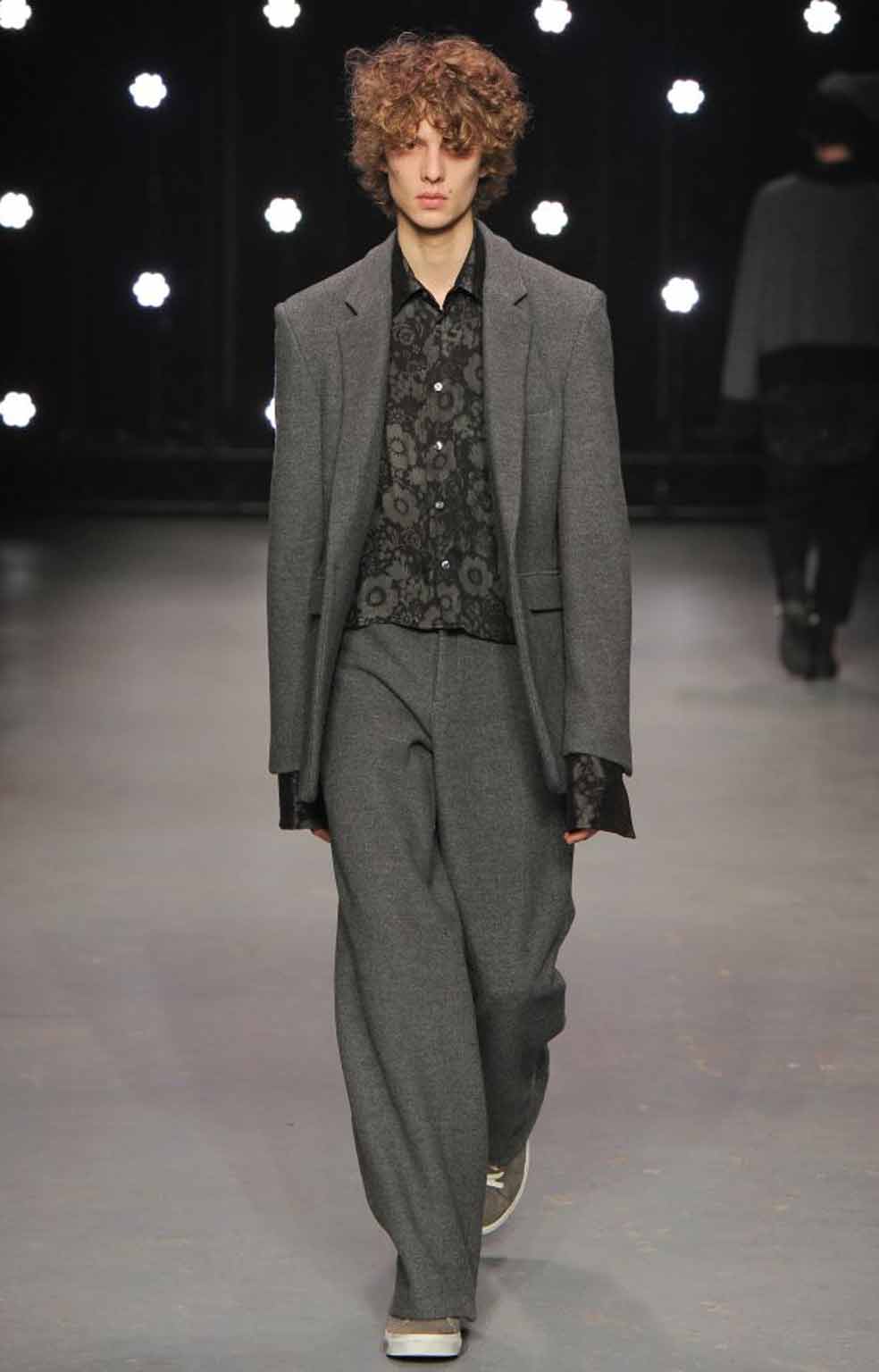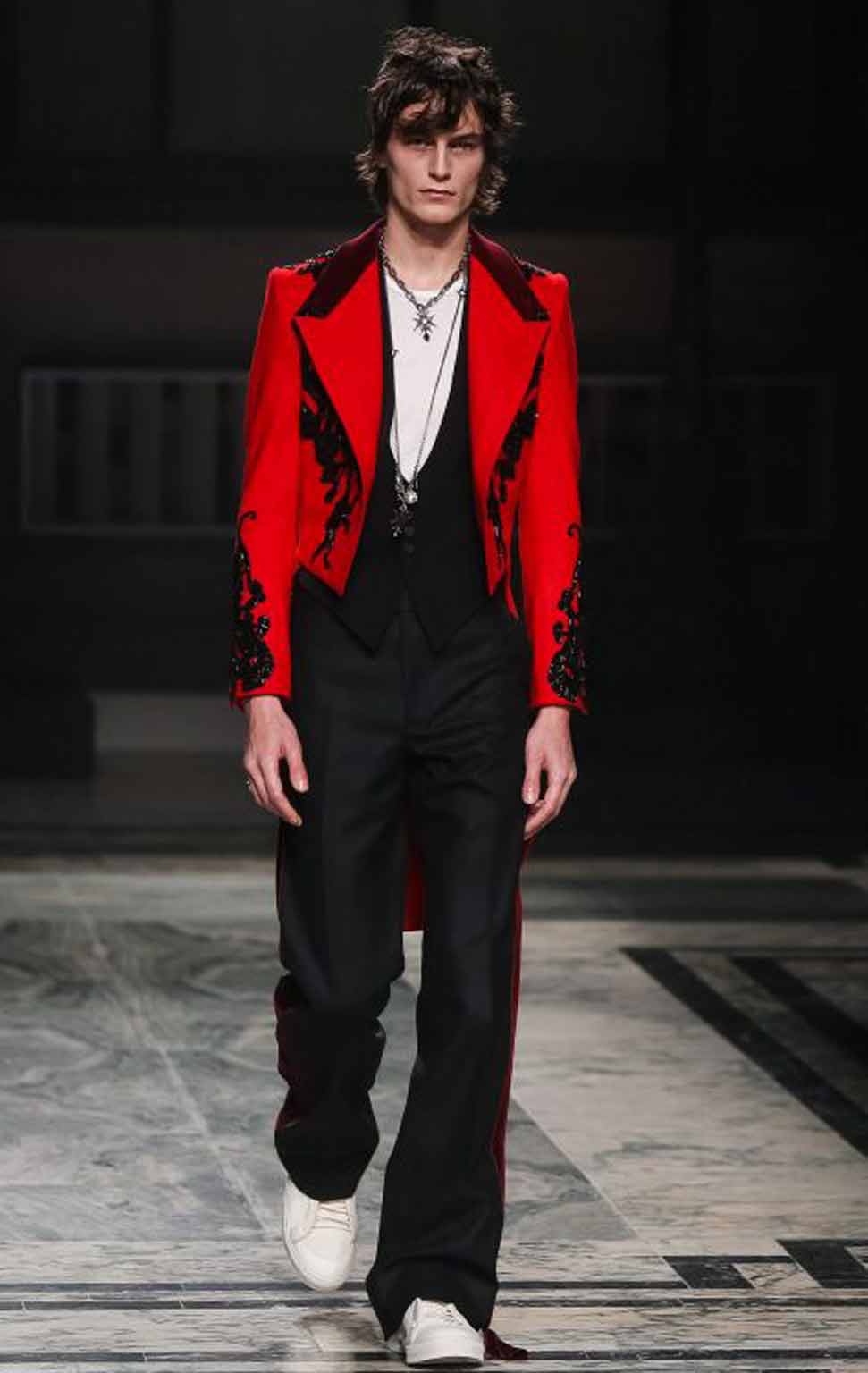LCM A/W 2016 roundup: From soldiers to club kids, schoolboys to everymen
Military garb was perhaps the strongest theme in various incarnations at London Collections Men

Your support helps us to tell the story
From reproductive rights to climate change to Big Tech, The Independent is on the ground when the story is developing. Whether it's investigating the financials of Elon Musk's pro-Trump PAC or producing our latest documentary, 'The A Word', which shines a light on the American women fighting for reproductive rights, we know how important it is to parse out the facts from the messaging.
At such a critical moment in US history, we need reporters on the ground. Your donation allows us to keep sending journalists to speak to both sides of the story.
The Independent is trusted by Americans across the entire political spectrum. And unlike many other quality news outlets, we choose not to lock Americans out of our reporting and analysis with paywalls. We believe quality journalism should be available to everyone, paid for by those who can afford it.
Your support makes all the difference.
Call it the January blues, or maybe blame the weather – whatever the reason, London Collections Men, which drew to a close in the capital yesterday, was a muted affair.
That's not to say that the four-day men's fashion showcase was a washout: it simply reflects the fact that the event has matured from its early days as experimental initiative into something much more established, with less need to rely on the attention-grabbing tactics of yore.
There was plenty to hold the gaze and get the grey cells firing, though: Craig Green, for instance, who was again responsible for one of the standout collections of the season. Green's ascent to golden boy status has been rapid but that speed has been in stark contrast to the pace at which he has developed his designs. This season, patience was duly rewarded as he pushed his work in a new direction, incorporating a streamlined silhouette and paring back the trailing straps and tags that have become his signature – and have since been borrowed liberally by other designers. The strapping became binding, the use of drawstrings on hoods and at necks lending the more accessible pieces a sense of restriction. But Green evidently wasn't feeling hemmed; he allowed his ideas to roam free – quite literally, with segments of leather lashed together by thick white ties, or padded silk sections artfully shrouding the body.
Green came up through the ranks of Man, the menswear arm of Fashion East that is renowned as an incubator of young, emerging talent. He graduated from the programme for spring/summer 2014 and his absence has been sorely felt since. Pleasingly, this season there was a return to form on the Man catwalk thanks to a duo of new recruits, Grace Wales Bonner and Charles Jeffrey, who share an art school sensibility and identifiable aesthetic.

This was the first catwalk presentation from Wales Bonner, who has garnered acclaim since she graduated from Central Saint Martins in 2014. To see her clothes in motion was to cast them in a new light. Wales Bonner's work is a continuing exploration of the black male and the African diaspora. There is something of the dandy in her collections, where slightly “off” details – trousers cut to swing around the ankles, shrunken and cinched-in tailoring, opulent embroidery juxtaposed with sporty pieces – are designed to make you look and think a bit harder – about notions of masculinity and what men want to wear. Wales Bonner's aesthetic is specific one: she's thoughtful, and already interesting to watch as she garners more and more attention from the mainstream. Jeffrey's talent can't be denied either, nor can the rebellious spirit with which he staged his collection, although it's perhaps more difficult to swallow than Wales Bonner's. Something of a spiritual son to Leigh Bowery, Westwood and McLaren and the Blitz kids, Jeffrey's collections are tied to his club night, Loverboy. The way he channels the energy and enthusiasm of dressing up for a big night out is contagious. There was an element of bricolage – layers of garments muddled together, artfully and with considerable skill – but it could not be dismissed as style over substance.

That can't always be said of JW Anderson's work: the divisive designer always strikes a balance between the eminently wearable, even mundane, and the provocative – and he did not disappoint fans of the latter. But as bellwethers go, Anderson is reliable: he has led the charge with regard to gender fluidity and the influence of his aesthetic has spread far and wide. He's also not immune to ticking trends, whether by design or happy accident: a grey wool coat reversed so its silver silk lining was on show; luxurious Kurt Cobain cardigans complete with dropped stitches; and the sporty clubwear of Nineties late nights and early mornings were in step with trends elsewhere.
Some strong ones have already emerged from London, although as the first of many offerings for autumn/winter, by the time store buyers get out spread sheets and calculators, they may have been discarded. Military garb was perhaps the strongest theme that emerged, in various incarnations – khaki as a key colour being the simplest. As well as the uniform of the battlefield, ceremonial dress and costume were strong, most notably at Alexander McQueen with scarlet hussar jackets and velvet- and satin-trimmed greatcoats. Tailoring made up much of the McQueen collection, but it was more relaxed and loose than the stiff, occasionally frigid take of the house's past. Sarah Burton said she wanted to “take the stuffing out” of these clothes, and she did. Crystal- and sequin-embellished jackets were sumptuous yet appeared lightweight and easy, especially styled as they were with loose trousers – tuxedo stripe trailing – and trainers. This was one of the best McQueen menswear collections in a long time: ghostly, gothic, historical but current.
Financially attainable for almost everyone, Topman Design is more trend-focused than most, which usually means that its catwalk collections are changeable, both in theme but also quality. A grungey take on grey-on-grey tailoring, all fuzzy bouclé textures and dangling sheeny satin shirt sleeves will no doubt be a hit on the high street, as will scuffed and slashed denim and various bomber jackets. Velvet, be it crushed or flower-printed, probably will not.
Coach is another brand that takes cost into consideration, and as such its clothes can sometimes feel simplistic. This was only the third men's ready-to-wear collection from the house, and it was full of the sort of things that appeal to the everyman. That's no bad thing, and it's heartening that creative director Stuart Vevers doesn't need to rely on stylistic trickery.
The same can't be said for Christopher Bailey of Burberry, who yesterday showed a collection of sporty pieces – zip-front funnel neck jackets, jogging bottoms and trainers – paired with oversized outerwear and effeminate satchels. Bailey is evidently chasing a youthful customer, but there was something too literal and schoolboyish about this collection and it didn't ring true. That's what London's best menswear had, from club-kids to mega-brands: honesty.
Join our commenting forum
Join thought-provoking conversations, follow other Independent readers and see their replies
Comments